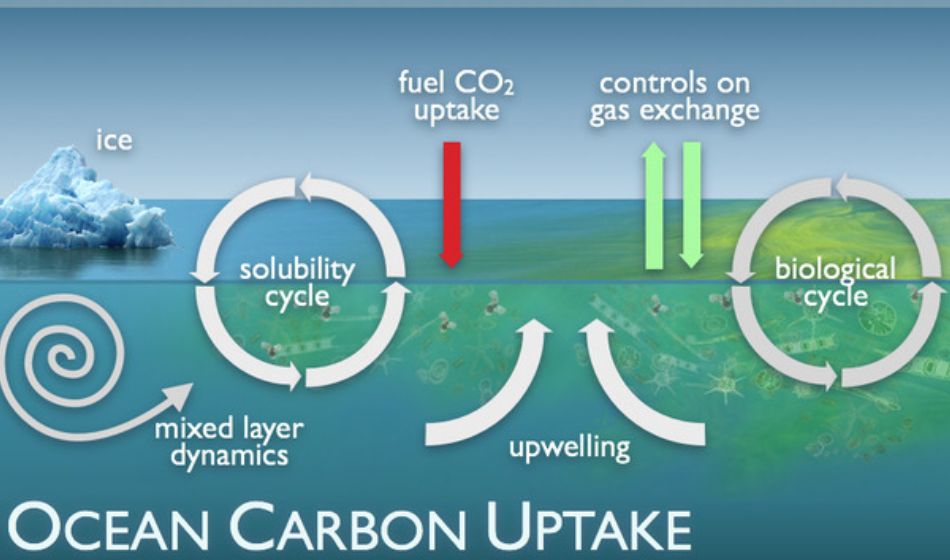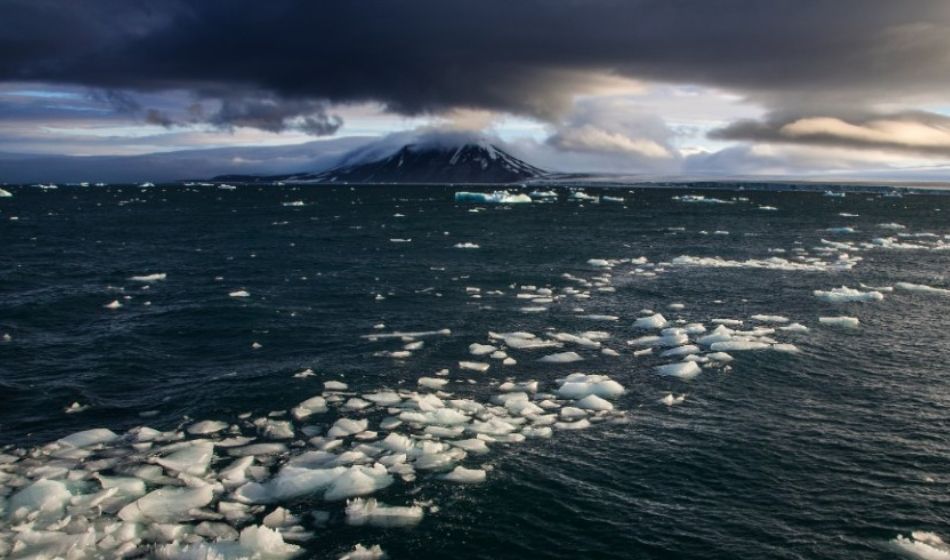In the vast expanse of the world’s oceans, oceanic viruses represent a secret army of microscopic agents who act on a low scale; nonetheless, they play a significant role in the planet’s carbon cycle. However, these microbial agents are not the usual suspects we normally think of when it comes to carbon capture; rather, they are marine viruses. Recent discoveries on how microorganisms in the ocean are exerting their control over the balance of carbon and perhaps affecting global change as well have cleverly demonstrated the complexity of their actions.
The Role of Oceanic Viruses in Carbon Capture
Oceanic Viruses: Tiny Giants of the Sea

Oceanic microbes harbor vast quantities of viruses, surpassing all other organisms in number. Despite their minuscule size, viruses exhibit significant diversity and play a critical role in aquatic ecosystems. Microorganism communities hosted by these viruses include a wide range of microbes, including bacteria, archaea, phytoplankton, and zooplankton. These viruses have the ability to disturb microbial community structure and natural biogeochemical processes.
Marine diseases certainly appear when viruses are involved. But, the latter actually contributes to a larger scale of sea biodiversity. Recent research reveals oceanic viruses can alter the genes of their microbial hosts. Horizontal gene transfer allows viruses to transfer genetic material to other microbes, giving them new abilities.
Unlocking the Viral Carbon Capture Potential
A latest study established one of the most intriguing features of marine viruses and their implications for carbon cycle mechanisms. Studies reveal viruses with genes for carbon fixation, impacting marine carbon cycling.
Apart from the collapse induced viral mortality of phytoplankton, the primary producers in the ocean. This phenomenon helps facilitate the sequestration of carbon from the surface ocean to deeper layers of the water body. Therefore resulting in its reduced availability for exchange with the atmosphere. This procedure, called “the viral shunt” is a characteristic way for carbon extraction from the surface ocean and will play an important role for global carbon budgets as well as climate dynamics.
The Impact of Oceanic Viruses on Climate Change
Carbon Sequestration Potential
The ability of oceanic viruses to influence carbon capture processes has significant implications for climate change mitigation. By enhancing the efficiency of carbon fixation in marine microbes, these viruses have the potential to increase the amount of carbon that is stored in the oceans, thereby reducing the concentration of carbon dioxide in the atmosphere. This natural carbon sequestration mechanism could play a vital role in offsetting the effects of human-induced carbon emissions on the global climate.
Ecosystem Resilience
Beyond their role in carbon capture, oceanic viruses also contribute to the resilience of marine ecosystems. By controlling microbes, viruses maintain balance in ocean ecosystems. This intricate web of interactions ensures the stability and productivity of marine ecosystems, which are essential for supporting biodiversity and sustaining life on Earth.
Future Directions: Unraveling the Mysteries of Oceanic Virology
As scientists continue to unravel the complexities of oceanic virology, several key questions remain unanswered. How do environmental factors such as temperature, nutrient availability, and ocean acidification influence viral dynamics and carbon sequestration rates? What are the long-term consequences of viral-mediated carbon fluxes for marine ecosystems and global climate stability?
Addressing these questions will require interdisciplinary collaborations and innovative research approaches, including advanced molecular techniques, bioinformatics, and oceanographic observations. By understanding oceanic viruses’ role in carbon capture and climate regulation, we can improve climate models, predict future scenarios accurately, and inform climate change strategies.
The Future of Viral Carbon Capture
Research on oceanic viruses and their role in carbon cycling is a rapidly developing field. Scientists are using cutting-edge techniques like genetic sequencing and metagenomics to explore the diversity of marine viruses and their potential applications.
Here are some promising avenues for further research:

- Identifying “Superpower” Viruses: By studying the various impacts of different viruses on phytoplankton, scientists might be able to identify specific viral strains that are particularly effective in promoting carbon sequestration.
- Targeted Engineering: With a deeper understanding of viral-phytoplankton interactions, scientists could potentially develop strategies to nudge these interactions towards increased carbon capture without causing harm to the marine ecosystem.
- Modeling and Prediction: Developing sophisticated computer models can help predict the potential impact of viral carbon capture strategies on a large scale. This will be crucial for evaluating the feasibility and effectiveness of such interventions.
Conclusion: A Tiny Hope in a Vast Ocean
The involvement of oceans’ viruses in carbon capture is a significant breakthrough in combating climate change. Moreover, these viruses are not passive bystanders in the vast oceans; rather play a crucial role in redirecting carbon and impacting Earth’s climate. Scientists are continuously uncovering new insights into the complex web of interactions driving carbon capture in the marine ecosystem. In our quest for knowledge of oceanic viruses, we might come across the key to climate change resolution and secure the health of our planet for the benefit of coming generations.

